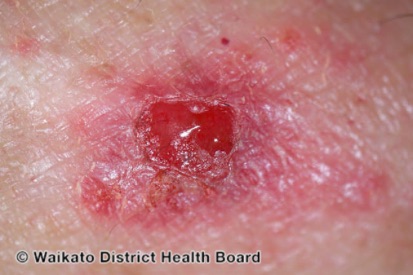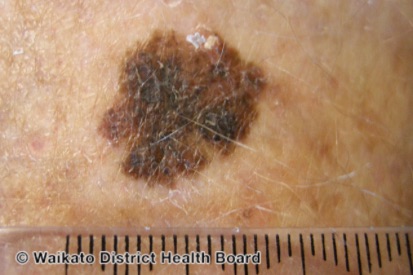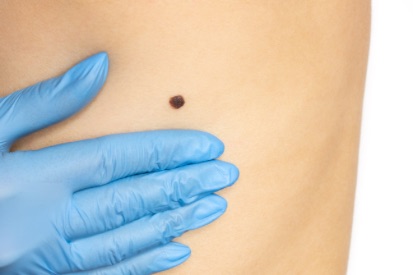Melanoma
Melanoma is a dangerous type of skin cancer that originates in melanocytes, the cells responsible for producing melanin, the skin's pigment. While melanocytes are primarily found in the skin, they can also be present in the bowel, eyes, and other areas of the body, though the risk of melanoma in these locations is much lower. Despite being less common than other skin cancers, melanoma is the deadliest, accounting for approximately 75% of all skin cancer deaths.
Early detection is crucial for treating melanoma effectively. Regular skin checks by a dermatologist, along with self-exams to monitor for changes in the shape, size, or color of moles and the appearance of new spots, are essential. If you notice any changes, it's important to schedule an appointment with a dermatologist immediately.
Examples of Melanoma





Symptoms of Melanoma
- Melanoma most often presents itself with the change of an existing mole, including change of symmetry, color, or shape.
- Irregular mole borders – scalloped, wavy, or notched.
- Diameter - anything new growing in size.
- Moles that itch, ooze or bleed.
- Melanoma can appear on normal skin tissue and does not always start as a mole.
What Causes Melanoma?
- Melanoma is primarily caused by the uncontrolled growth of pigment-producing cells (melanocytes) in the skin.
- Melanoma is often triggered by exposure to ultraviolet (UV) radiation from sunlight or tanning beds.
- Genetic factors and a history of severe sunburns also contribute to the development of melanoma.
How to Prevent Melanoma
Melanoma FAQs
Anyone can develop melanoma, but risk factors include having fair skin, a history of sunburns, excessive UV exposure, numerous moles, a family history of melanoma, and a weakened immune system.
Preventing melanoma involves protecting your skin from UV radiation by wearing sunscreen, seeking shade, wearing protective clothing, and avoiding tanning beds. Regular skin checks and self-examinations are also important.
Treatment for melanoma depends on its stage and may include surgical removal, immunotherapy, targeted therapy, radiation therapy, and chemotherapy.
It is recommended to have a professional skin check by a dermatologist annually. However, individuals at higher risk may need more frequent checks. Monthly self-examinations are also advised.
If you notice a suspicious mole or any changes in your skin, schedule an appointment with a dermatologist as soon as possible for a thorough examination and possible biopsy. Early detection is key to successful treatment.
Early signs of melanoma include changes in the shape, size, or color of existing moles, the appearance of new spots on the skin, and any mole that looks different from the others (known as the "ugly duckling" sign).
From Our QualDerm Family of Brands: Melanoma Treatment Options
Melanoma Treatment Options
We will confirm melanoma through a biopsy and pathological examination and then treat appropriately.
Treatment options for melanoma provided by a dermatologist may include surgical procedures to remove the cancerous tissue, such as excision or Mohs surgery. Additionally, your dermatologist may recommend therapies like immunotherapy, targeted therapy, or chemotherapy, depending on the stage and characteristics of the melanoma. Close monitoring, regular skin checks, and collaboration with other specialists ensure effective treatment and reduce the risk of recurrence.
If you notice unusual growths on your skin as mentioned above, we highly recommend scheduling an appointment with one of our providers. Annual skin checks are essential for early detection.
Early detection and treatment are crucial elements of comprehensive skin cancer care.
Featured Products for Sun Protection
Check your local office for current stock!
Check your local office for current stock!
